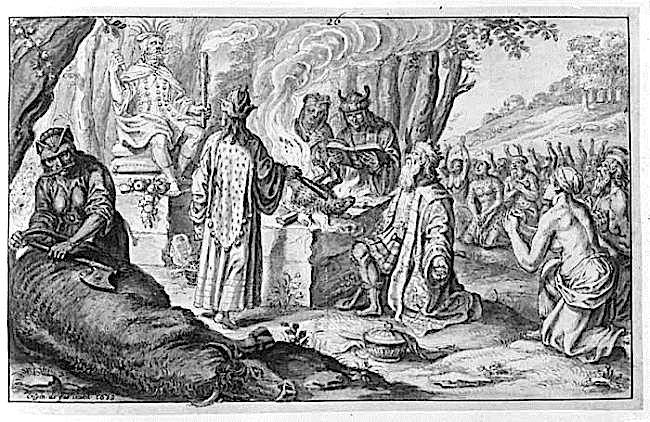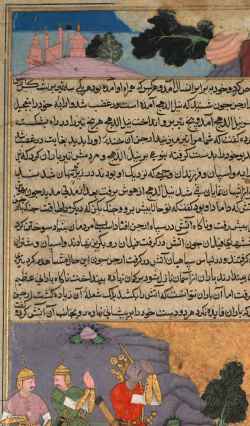A king sacrifices an animal in front of the statue of Thor
Year: 1639
Location: RKD – Nederlands Instituut voor Kunstgeschiedenis
External link: rkd.nl
Topics:
2. Sacrifice and religion: Comparisons, Antiquarians, Anthropology (16th-18th Century) 3. Sacrifice and politics (16th-18th Century)
2. Sacrifice and religion: Comparisons, Antiquarians, Anthropology (16th-18th Century) 3. Sacrifice and politics (16th-18th Century)
Edited by: Chiara Petrolini
Related Documents:
"The First Adventure of the White Horse". The king performed the horse sacrifice in order to determine the extent of his rule. For one year a horse wanders and every land through which the horse passes becomes part of the king’s territory. Arjuna following the horse encountered the son-in-law of the god of fire, Agni, who creates a river of fire to block the warriors. Arjuna pleads with Agni, the god of fire that the horse be allowed to pass, saying that the horse sacrifice is in accordance with sacred Vedic injunctions, and that at the end of the year, the horse will be sacrificed to him, the god of fire himself. (1610-1617)
from: Page from the Khan Khanan's Razm Nama (Book of Wars)
The Cleveland Museum of Art
Why do we call the Holocaust 'The Holocaust'?
in: Shoah: The Paradigmatic Genocide, pp. 51-66
Lanham: UPA, 1994.
An Irish ritual of kingship: the sacrifice of a white mare and preparation of a stew, in which the king bathes and which his supporters ea (ca 1196-1223)
British Library, London [ms Royal 13 B. VIII, fol. 28v]
Sacrifice of Iphigenia [1602 - 1607]
from: Salsmann, Wilhelm. P. Ovid Nasonis XV Metamorphoseon librorvm figurae elegantissime a Cr[i]spiano Passaeo laminis aeneis incisae: quibus subiuncta sunt epigrammata latine ac germanice conscripta, fabularum omnium summam breviter ac erudite comprehendentia, Cologne, Joannem Jansonium, 1607
Rijksmuseum Amsterdam





